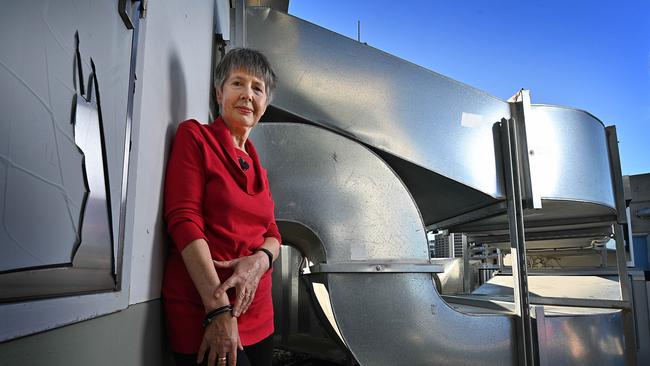Scientists clear the air on Covid failure
An Australian aerosol physicist has led a global team of air quality experts in calling for the development of health standards aimed at reducing the risk of the airborne transmission of respiratory infections such as COVID-19.

Australian aerosol physicist Lidia Morawska has led a global team of air quality experts in calling for the development of health standards aimed at reducing the risk of the airborne transmission of respiratory infections such as COVID-19 by increasing ventilation in buildings.
Despite global standards that govern eliminating the transmission of waterborne and foodborne infection transmission, there are no public health guidelines that address the risk of airborne transmission of viruses and bacteria in indoor spaces resulting from poor ventilation.
The group of 40 of the world’s top aerosol scientists have published a paper in the prestigious journal Science calling for a “paradigm shift” in health regulations, standards, and building design and operation relating to the quality of the air people breathe.
“Governments have for decades promulgated a large amount of legislation and invested heavily in food safety, sanitation, and drinking water for public health purposes,” the scientists say in the paper. “By contrast, airborne pathogens and respiratory infections, whether seasonal influenza or COVID-19, are addressed fairly weakly, if at all.
“The COVID-19 pandemic has revealed how unprepared the world was to respond to it, despite the knowledge gained from past pandemics. A paradigm shift is needed on the scale that occurred when Chadwick’s Sanitary Report in 1842 led the British government to encourage cities to organise clean water supplies and centralised sewage systems.
“In the 21st century, we need to establish the foundations to ensure that the air in our buildings is clean with a substantially reduced pathogen count.”
The World Health Organisation recently acknowledged airborne transmission as a primary form of virus transmission. Australia’s infection control advisers have been criticised for continuing to emphasise droplets as the predominant mode of virus spread, despite several instances of transmission in hotel quarantine which could only be explained by airborne transmission.
In poorly ventilated spaces, tiny particles of virus can remain suspend for many hours in the air inside a building.
Air quality and the amount of pathogens that are able to remain suspended in the air inside buildings is determined primarily by ventilation and the amount of clean air from outdoors that enters the building. Airconditioning systems need to circulate an adequate amount of clean air which can be taken from outdoor air or be filtered and disinfected if air is being recirculated.
Professor Morawska, director of the Queensland University of Technology’s International Laboratory for Air Quality and Health, said the amount of ventilation depended on the activity conducted there. Quiet cinemas and libraries did not need as high levels of ventilation, whereas loud places such as bars and restaurants, where people had to raise their voice or shout to be heard, needed better ventilation because people were forcefully emitting more respiratory droplets.




To join the conversation, please log in. Don't have an account? Register
Join the conversation, you are commenting as Logout